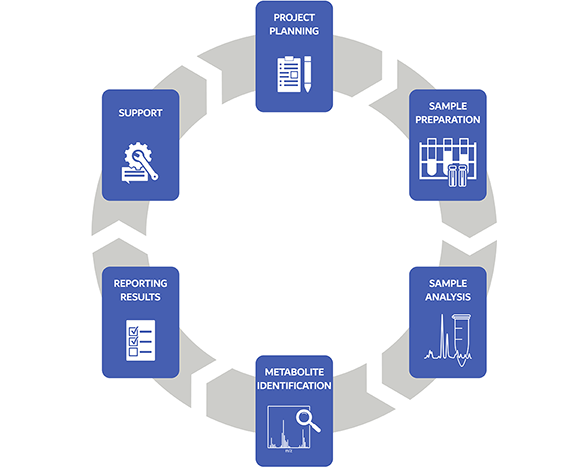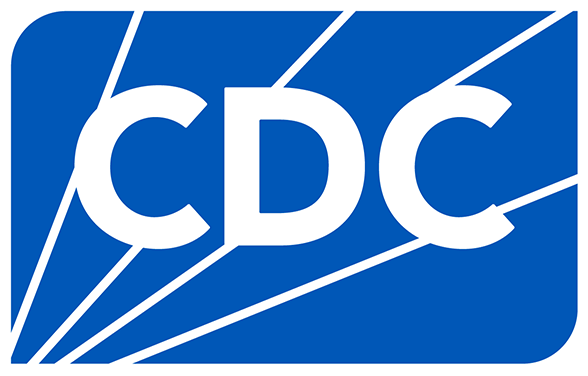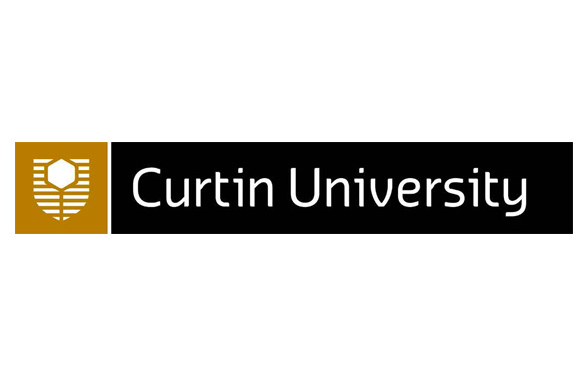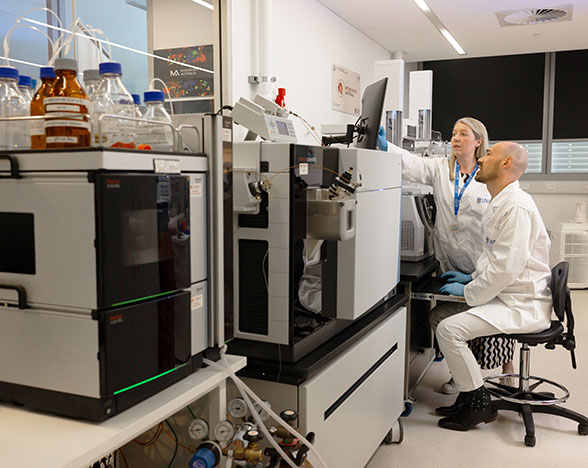
Metabolomics Australia (UWA)
A leader in the delivery of cutting-edge metabolomic services supporting academia and industry.
About us
The Metabolomics Australia network was founded in 2007 as the first high-throughput Metabolomics facility in Australia. The UWA node is one of five research nodes around the country that house staff and equipment dedicated to servicing researchers and industry interested in small molecule analysis.

What is Metabolomics and how can it help?
Broadly, metabolomics is the comprehensive measurement and identification of small molecules, commonly known as metabolites, originating from biological specimens. Metabolites are compounds approximately less than 2000 daltons produced or consumed when a living organism breaks down fuel, tissue, drugs and chemicals, and are collectively referred to as the metabolome.
Metabolite analysis is used to reflect actual cellular conditions and to identify useful indicators (commonly termed biomarkers) of abnormalities, health, consequences of genetic engineering and adaptations to test compounds such as drugs, environmental factors and monitoring food quality. In combination with other functional -omics analyses such as genomics or proteomics, metabolomics offers the potential to understand a whole biological system.
Metabolomics Australia (UWA) provides metabolite analysis using a range of compound-separating chromatography methods coupled to mass spectrometry detectors, which simultaneously identify and quantify metabolites. Techniques can be used in combination to give comprehensive metabolome coverage.
Why us?
Here at Metabolomics Australia (UWA), our team has extensive experience in the development of analytical techniques and methods for small molecule analysis in a diverse range of sample types inclusive of, but not limited to, plasma, tissue, plant, urine, water, microbial extracts, foods and mining samples.
If you want to understand more about metabolomics and how it can relate to your biological question please contact our team.
- Experienced, specialised team
- Versatile methods optimised to your needs
- Variety of applications for metabolite and small molecule analysis
- Accommodation of most sample types and matrices
- Collaborative and fee-for-service options available
Metabolomics Australia (UWA) management and personnel produce high quality results for small molecule analysis in a variety of matrices. This is achieved through:
- Operation of equipment in accordance with laboratory procedures
- Regular preventative maintenance of equipment
- Qualification of chromatography and mass spectrometry equipment prior to use
- Operation of metrological calibration and intermediate check program for all measuring equipment
- Analysis of internal quality control samples with every batch
- Post-analytical evaluation of quality control samples with every batch

Our services
We provide a bespoke end-to-end service from assistance in project planning through to reporting of results. Consult the services detailed in the tabs below or contact our team for more information on sample types, sample handling and preparation, methods of analysis and data processing.
Sample preparation and extraction is key to wide metabolome coverage and low analytical variation of measurement results. We house a range of sample preparation equipment, including metrologically traceable-calibrated high precision balances and pipettes, sample homogenising equipment and robots for automation of chemical derivatisation. Our team can work with you to develop tailored sample preparation procedures for your project. Our sample preparation procedures include:
- Bead beating homogenisation
- Liquid-liquid extraction
- Solid phase extraction (SPE)
- QuEChERS extraction with dispersive solid phase extraction clean-up
- Modified Bligh and Dyer
- Solid phase microextraction
- PAL sample robot for automated compound derivatisation
Targeted metabolomics is a hypothesis-driven research tool and involves the measurement of single or small numbers of chemically characterised compounds to a high metrological order. Measurement results are fully quantitative and reported using the International System of Units (SI). We ensure, where possible, that targeted assays meet any client required analytical goals and are metrologically traceable to international or national reference measurement standards, thereby ensuring accuracy of the methodology and allowing comparison of results across independent studies. We offer a method development service for fit-for-purpose, bespoke methods in addition to several standard methods:
- Serum vitamins and vitamers
- Steroids
- Serum melatonin
- Cannabinoids
Untargeted metabolomics is a hypothesis-generating research tool and involves the comprehensive, global analysis of all detectable compounds within a sample. Compounds are characterised and differences in metabolite abundance between groups are identified using relative quantitation. Analysis is performed on a high-resolution Thermo Orbitrap ID-X Tribrid mass spectrometer for high-confidence compound identification and AquireX Intelligent Data Acquisition software, allowing identification and detection of low abundance metabolites. A combination of separation methods is used for detection of both polar and non-polar metabolites giving broad metabolome coverage.
Semi-targeted metabolomics is a hypothesis-generating research tool that lies between targeted and untargeted metabolomics. In semi-targeted assays, a pre-selected panel of metabolites are identified and relatively quantified. We have several panels available and additionally develop metabolite panels on request. Available panels include:
- Polar metabolites
- Volatile organic compounds (VOCs)
- Amino acids
- Polyphenols and flavonoids
- Molecular networking (xenometabolite identification)
We have several software solutions and mass spectral library databases from a variety of vendors available for processing data generated from our analytical workflows. Our software and databases enable compound identification, quantitation, comparative analysis and visualisation of results and includes:
- Compound Discoverer
- TraceFinder
- AnalyzerPro XD
- Mass Hunter Qualitative and Quantitative Analysis
- LabSolutions Insight
- NIST Library of Tandem Mass Spectra (2020)
- mzCloud
- mzVault
Past projects

International certification for vitamin D analysis
Gained certification by the Centre for Disease Control and Prevention (CDC) for the international Vitamin D Standardization Certification Program for the analysis of serum 25(OH)D3, Epi-25(OH)D3, and 25(OH)D2.
Outcome: Establishment and validation of a robust method for analysis to enable precise Vitamin D analysis in clinical samples for research and industrial applications. Certification for the analysis of Vitamin D in human serum thereby establishing metrological traceability of results.

Metabolism of pearl oysters
Client: Department of Primary Industries and Regional Development, Pearling Industry WA
Established the metabolic characteristics of two groups of pearl oysters by identification of differences in the relative abundance of numerous metabolites such as sugars, amino acids and organic acids.
Outcome: Identified significant changes in the metabolism of those two groups of pearl oysters.

Identifying quality truffles through aromas
Client: Truffle Industry, Curtin University
The project focused on the analysis of the elements that comprise the aroma profile of WA grown Périgord truffles at different timepoints after harvest and comparing the result with the aroma of globally grown truffles.
Outcome: The project identified desirable aroma chemicals which would be used as biomarkers of quality and freshness.

Our instruments
We house a variety of cutting-edge mass spectrometry instruments to be able to accommodate your needs.
FAQ
-
What are my sample requirements?
Sample requirements are project dependant. Please contact our team [email protected] to discuss specific requirements.
-
What does your service include?
Our service is flexible and can be tailored to your budget and time requirements. We offer collaborative and fee-for-service options which can vary from end-to-end project design to reporting, or just include discrete services such as sample analysis on the instrumentation only. Contact our team [email protected] to discuss your requirements.
-
How can I use Metabolomics?Metabolomics can be used to answer an extensive range of research questions. It can be used to both generate and test different hypotheses. We have been involved in a diverse array of projects.
-
How much does the service cost?Costs vary depending on how what type of analysis is used, how many of the services are used and if any tailored methodology is required. Additionally, we offer discounts for academic research projects and collaborative work.
-
I can’t see my analyte/s of interest listed on the website. Can you still measure them?We offer a method development service for novel compounds and analytes. Feel free to contact the team to discuss your requirements.
-
Can old samples that have already been collected and stored be analysed for metabolomics?This may be possible if the analytes of interest are stable under the storage conditions and if there are sufficient quantities left. While some metabolites are stable for long periods of time, others require special temperature and light storage conditions and occasionally chemical stabilisation.
-
Should I use targeted or untargeted analysis?Targeted analysis should be used where your project requires specific analytes to be reported using the International System of Units (SI) or you suspect that there may be only small changes between treatment groups. Untargeted analysis is helpful when you are unsure which analytes you are interested in and would like to look at changes globally.
-
How many biological replicates do I require?For untargeted work we recommend a minimum of 6-8 samples per group to see changes in univariate and multivariate data analysis. Ideally, there should be as many replicates as possible.
-
How do I know my targeted assay is fit-for-purpose?All our targeted assays are technically validated for fitness-for-purpose. We establish analytical goals for each individual assay in line with what is deemed appropriate for the application and discipline. We then determine, experimentally, the performance specifications of each assay such as imprecision, bias and working range to ensure that the established goals are met.
Location and contact
Email:
[email protected]
Address:
Centre for Microscopy, Characterisation and Analysis (CMCA)
Level 3
Harry Perkins Institute of Medical Research
Nedlands Campus
6 Verdun Street
Nedlands WA 6009

